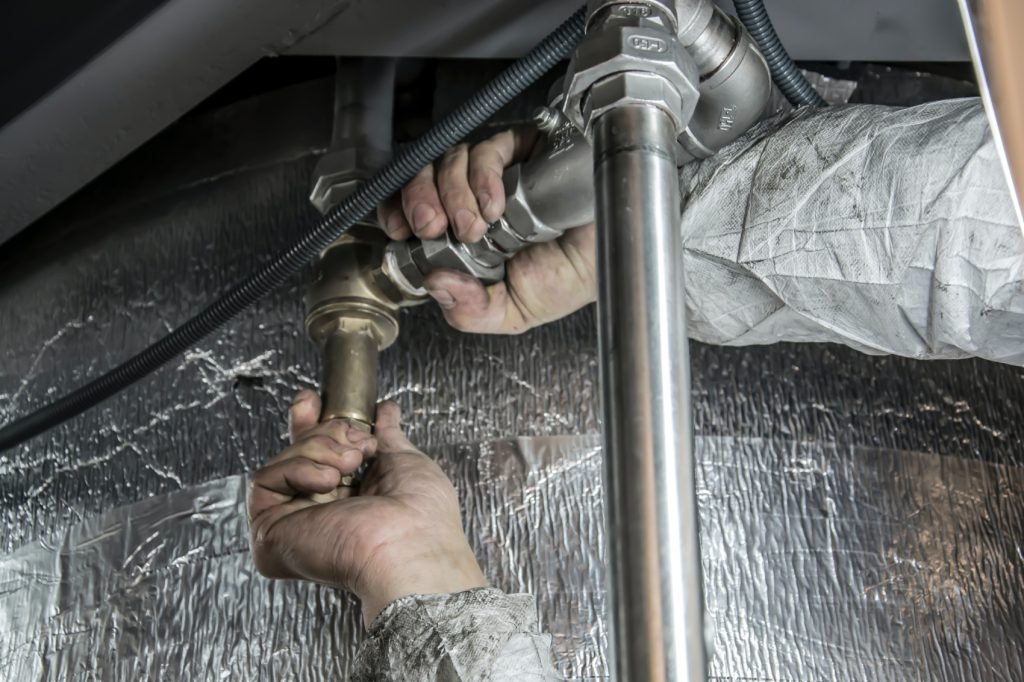Essential Plumbing Tools Everyone Should Have at Home

There are certain tools homeowners should have on hand, but many do not think about them. Plumbing issues can come up at any time. In this case, there are certain things you can do to help improve this situation until a plumber comes to your home to make the necessary repairs.
A few essential plumbing tools for DIY repairs, such as - pipe wrenches, plungers, hacksaws, etc., might be handy to make a few minor repairs. However, it is advisable to call a professional if you have severe plumbing problems. They have the correct expertise and understand the plumbing system.
In this blog, we have discussed a list of the tools you should have on hand that you may need in a pinch to resolve a plumbing-related issue.
10 Essential Plumbing Tools You Must Have At Home!
Here are 10 must-have plumbing tools for every homeowner -
- Pipe Wrench - Pipe wrenches are the most common tool available in the DIY toolkit. It is the largest of all of the wrenches and is used by plumbers. Also, it is a very heavy tool and is used to either loosen nuts and fittings on pipework or to tighten them.
You can even use two of these to make things easier since you can use one to hold a pipe in place and the other to rotate the nut or the fitting in the direction it needs to be in to loosen or tighten it. - Basin Wrench - A basin wrench is shaped like the letter T and is used for working on faucets. It has a clamp-like mechanism on one end. This allows you to reach into a narrow space to tighten or loosen nuts, stop a leak, or help the faucet work better.
A basin wrench is spring-loaded and is almost a half-circle, where it can extend. It can also come out of the hook to work in the toughest spaces. - Adjustable Wrench - This is one of the best tools for fixing plumbing issues. An adjustable wrench, also known as a crescent wrench, is used to loosen or tighten hexagonal nuts and fittings on pipes. They are available in a variety of different sizes. However, the most common to be used when addressing plumbing issues are the 6-inch and the 10-inch sizes.
They are open-ended with a movable jaw that works on all types and nut sizes. They are really helpful when installing pipes of varying thicknesses. - Tongue And Groove Pliers - Tongue and groove pliers work best because they are smaller tools. They allow you to loosen or tighten nuts and bolts that are too small for you to be able to grip well with a wrench. They have long handles and are used to tighten, loosen, grip, pull, push, twist, or hold something in place.
They have serrated jaws generally set 45 to 60 degrees from the handles. The best thing about this tool is - it can adjust to any size without increasing the distance between the handles. - Plungers - Plungers are most commonly found in every household. There are three types of plungersStandard Plungers Or Sink Plungers - They have a rubber cup connected to a wood and are best for kitchen sinks, bathtubs, etc.
Flange Or Toilet Plungers - They have a flange attached to the suction cup, which forms a tight seal inside the toilet drains. It helps to clean the toilet clogs.
Accordion Plungers - They are usually used for tough toilet clogs. They are made out of a single piece of plastic. The cup is shaped like an accordion and has bumps and ridges on it.
Even professional plumbers use them to unclog a drain or toilet. They have one with a very heavy-duty flange and a cup of varying sizes. - Hacksaw - A hacksaw may look very weak and flimsy, but it can actually cut through plastic and metal pipes. It also cuts nuts, bolts, screws, and other hardware. Though this is considered one of the best plumbing tools for homeowners, using a hacksaw can be challenging. Hence, it is advised to secure the blades tightly.
They have an adjustable tension machine to control the blade’s tightness. This ensures proper and efficient cuts. Also, it is best to fit in any plumbing toolkit. Also, if you have a hacksaw, it is important to have a metal file as well. This helps to smooth the rough edges that are left after cutting metal piping. - Plumber’s Tape - Plumber’s tape is also known as Teflon tape, PTFE tape, or thread seal tape. It can be wrapped around pipe threads to help join the connections together without allowing any water or air to escape. Plumber’s tape is usually 0.003 to 0.004 inches thick and comes in widths of ½ inch or ¾ inch - making it best for wrapping around standard pipe threads.
They protect the metal from corrosion caused by water or chemicals, extending their lifespan. The tape also acts as a lubricant. It helps screwing and disassembling the pipes without damaging the threads. - Pipe Cutter - A pipe cutter is very important to have on hand since it provides a quick and very clean way to cut a pipe. It is best to have a standard-sized cutter as well as a smaller cutter to help you work in very tight places. This tool can cut through any material, including - PVC, PEX, steel, copper, and brass.
It offers a cleaner and more precise cut. Also, they are lightweight and have adjustable jaws or cutting wheels. Thus allowing them to accommodate different pipe sizes. Some high-quality cutters feature hardened steel blades, which makes them durable. - Plumber’s Tape - Plumber’s tape is known as the duct tape of plumbing since it can be wrapped around pipe threads to help join the connections together without allowing any water or air to escape.
- Drain Snakes - Drain snakes are great for removing clogs from smaller drains and pipes, such as - sinks and bathtubs. This is one of the common things you’ll find in the plumbing tool list for beginners and professionals. It has a metal crank that can be turned. It will wind the snake down through the drain until you reach the clog, and you can pull it out.
This is mostly used when the plungers are ineffective. This means you can use this if you have stubborn clogs. There are several types of drain snakes, such as - hand augers, power augers, and toilet closet augers.
Pipe Inspection Camera
Who said only plumbers can use pipe inspection cameras? You can do it too! A pipe inspection camera, also known as a borescope, is a tiny camera that is tethered by long and flexible cables. They also have LED lights attached to them to ensure a proper picture in the darker regions of the drain.
They eliminate the need for digging or disassembling. This is because they are sent down the pipes to give a clear view of the clogs and other issues.
DIY Plumbing Tips For Beginners And Pros
Here are some tips you may need - no matter if you are a beginner or a pro in DIY repair -
- Caulk sink and tub seals to prevent leaks.
- Use vinegar for mineral buildup in the showerheads.
- Always turn off the water before starting any plumbing repair.
- Drain your water heater yearly, as it prevents sediment buildup.
- Always keep a plunger handy, as it helps you clean minor clogs.
- Don’t over-tighten the fitting, as it can crack pipes and damage threads.
- Invest in quality tools such as wrenches and pliers to make the job easier.
- Wrap plumbers tape clockwise on the threads to prevent leaks and make sealing easier.
- Lastly, if you’re unsure about the plumbing system, consider hiring a professional plumber to avoid costly mistakes.
Takeaway
It is important to have the right tools to ensure accuracy and quality results. Investing in high-quality plumbing tools can make your work easier and faster. There are plumbing tools for beginners as well that can help you accomplish your DIY plumbing job with ease.
Having a plumber’s tools on hand is a great idea so you can mitigate plumbing issues right away. But you will ultimately want to call upon a professional plumbing service that can address any issues you are having.
Need Plumbing Assistance In Sacramento? Contact Ace Plumbing for Expert Repairs!
If you have been looking for experienced and knowledgeable plumbers in the Sacramento area, look no further than the plumbing professionals at Ace Plumbing Heating and Air Conditioning.



